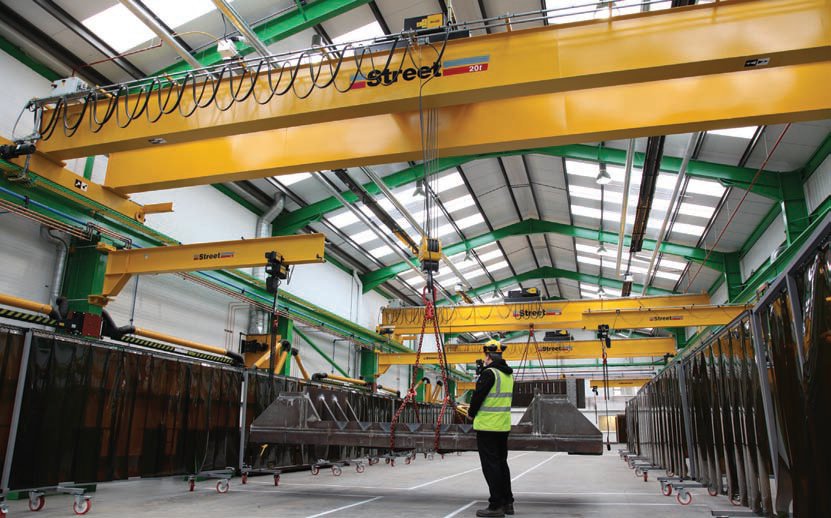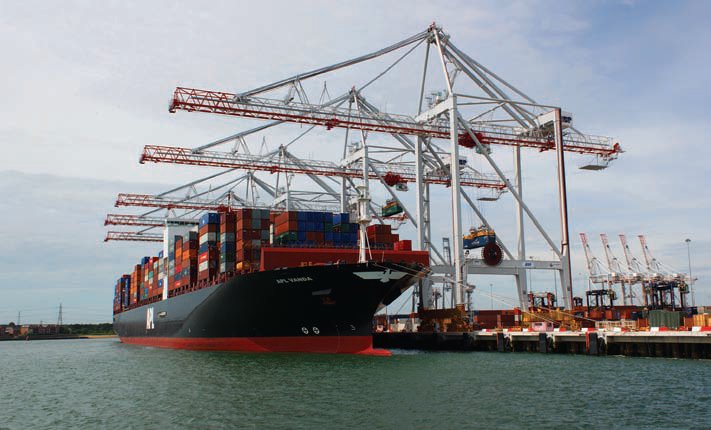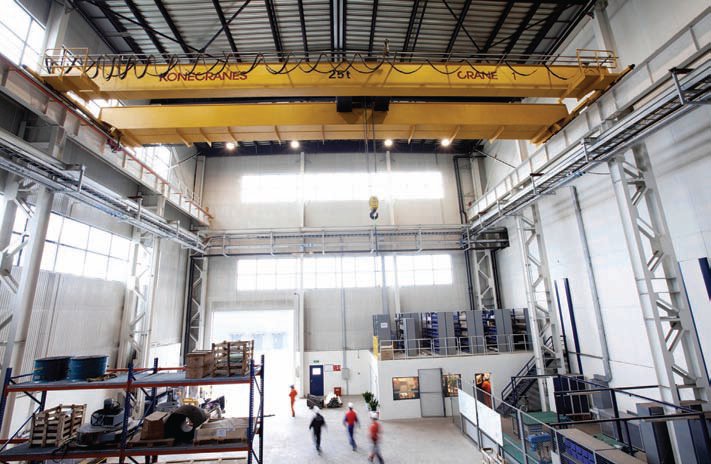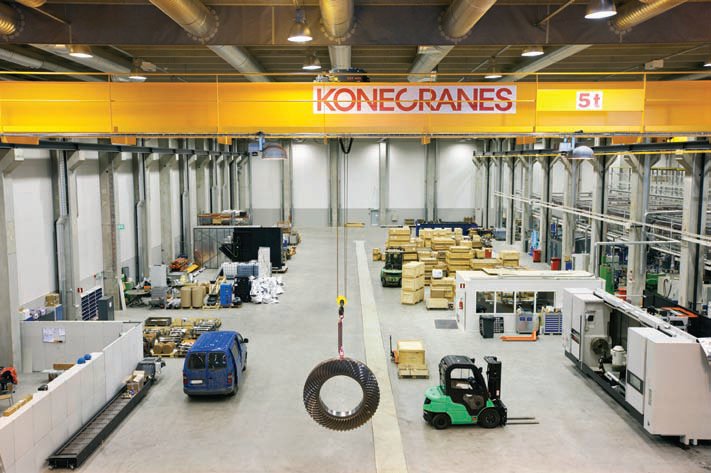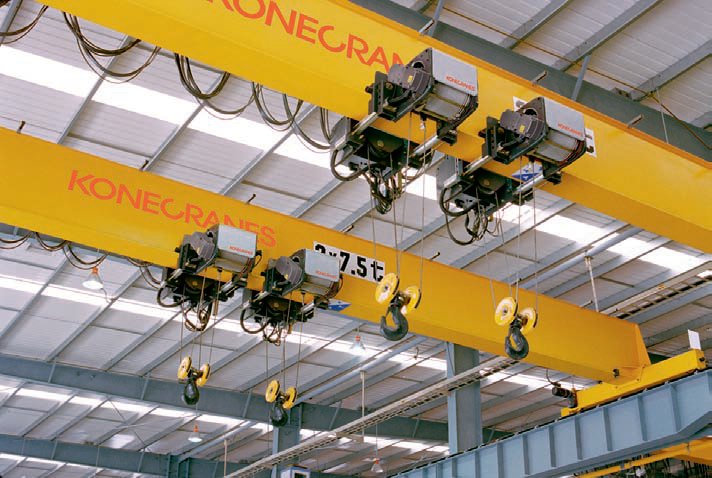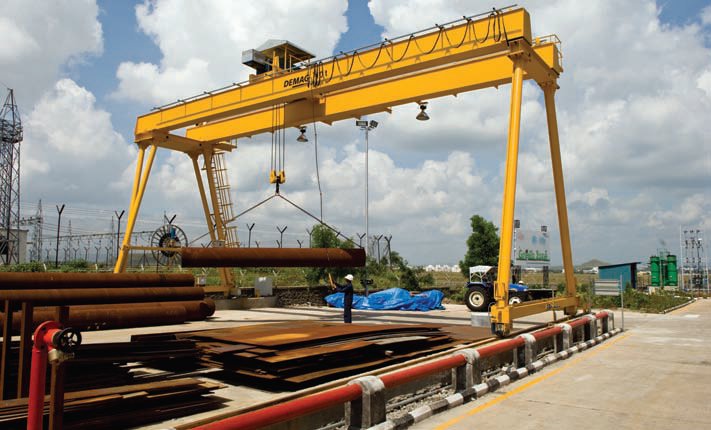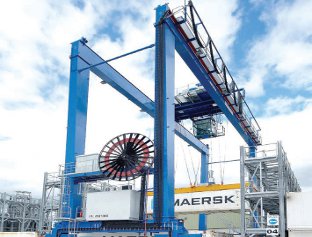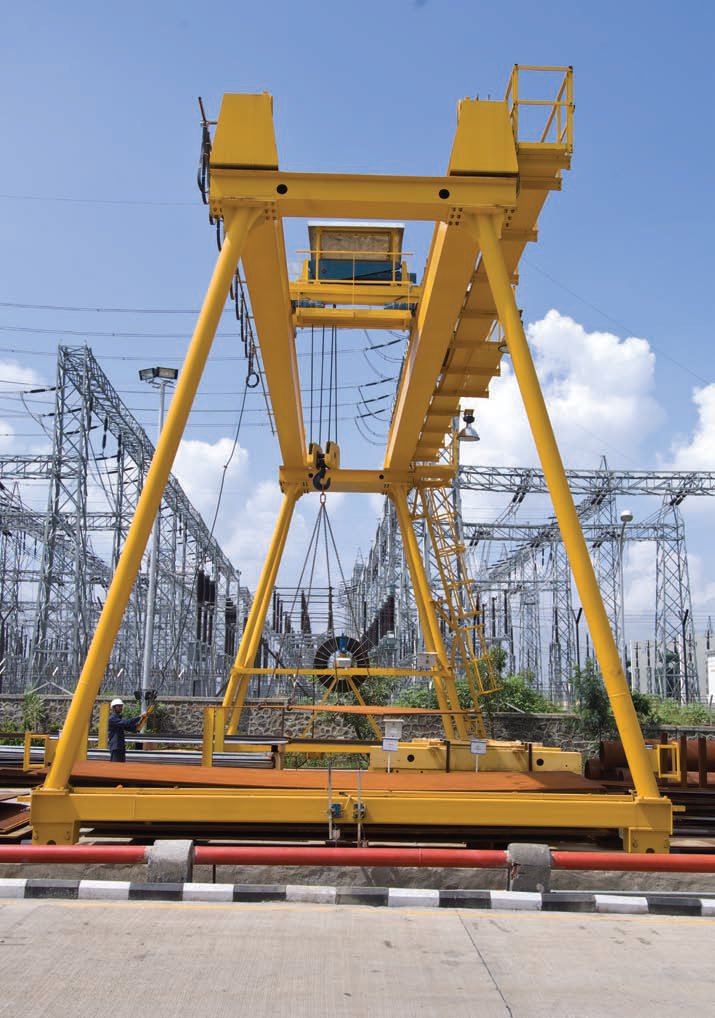Need for speed drives development
13 May 2015Gantry crane manufacturers have seen an increase in units sold over the last three years. Sally Spencer reports
The gantry cranes sector has seen solid growth over the last few years, bucking the trend of other industry sectors.
Demand has been such that Liebherr Container Cranes had to build a new 15,500m2 fabrication hall at its facility in Ireland, just to keep up.
"It entered production in mid-2013 and has given us a substantial increase in capacity," said Trevor O'Donoghue, sales and marketing.
"2014 was one of our busiest years to date, with orders and turnover at an all time high," he continued. "Our order book for 2015 and beyond is in excellent shape and we have healthy order levels across all products, including gantry cranes."
Annual increase
It's a similar story at Konecranes across all market territories, according to Cliff Hilson, industrial crane products sales director for the UK and west Europe.
"From Konecranes' UK perspective, sales of gantry cranes have increased annually over the last three years both in terms of monetary value and units sold," he said.
"What's particularly pleasing is that the escalation in demand has not been restricted to a specific gantry crane product or market sector. Demand remains buoyant in relation to all gantry cranes and across a number of key market sectors, in particular, energy from waste, automotive and general manufacturing."
One notable increase in orders for Konecranes's RTGs in recent times came from Meridian Port Services (MPS) in the Port of Tema, Ghana. The company first delivered equipment - reach stack and empty handlers - back in 2007 when MPS first started operating. By 2012 business was so strong that MPS had to increase its yard capacity and the only way it could do that was to convert the operation from reach stackers to RTGs. It now has nine diesel/electric Konecranes RTGs.
Contract delivery
Demag cranes product manager Martin Marincic said his company has also seen an increase in requests for quotations and a resulting increase in orders.
For example, Demag Cranes and Components won the contract for the delivery of two travelling and 17 stationary portal cranes as well as four single-girder overhead travelling cranes for a deep sea pipe production project off the coast of Angola a couple of years ago.
Both of the travelling cranes, which each have a load capacity of 10 tonnes and a span dimension of 12m, are used for the storage of pipe sections. The cranes also serve an assembly line, which combines 12m-long sections into pipes measuring 48m in length. The cranes operate on a crane runway measuring 195m in length.
Marincic added that North America had shown the best growth for all Terex companies but that South Africa "had been strong" and that business in both China and South America was good. Only Europe had proved to be slower "but that appears to be righting itself".
Street Crane Co's experience of world trade mirrors that: "The UK and North America remain buoyant markets but mainland Europe and especially the Eurozone is still slow, with particular concerns over payments," said Chris Lindley Smith, sales director.
"Growth of trade to Europe is being hampered by the declining value of the euro, making UK products seem relatively more expensive. This also means we see more competition here from European producers who, facing difficult times on their own turf, eye the UK as a potential saviour, with buoyant trade and better market prices."
Fluctuating prices
Lindley Smith said that while the fall in the oil price had affected industry worldwide, the Gulf region, which has been "a good source of business for Street" over the past 20 years, continued to be a strong market. "This may seem counter intuitive but long-term investment in this region is in the non-oil sector to provide continuing prosperity when oil ceases to be the main plank of these economies," he said.
In other regions, however, fluctuating oil prices may not have such a positive effect. "In the UK it looks likely that higher cost fields in the North Sea will be mothballed and new exploration curtailed, affecting the on-shore engineering industries that service and supply this market," said Lindley Smith. "Oil sands and shale gas exploitation in Canada may be similarly impacted."
There are a number of trends defining the market for container handling cranes at the moment, according to Liebherr's O'Donoghue, who added that these obviously depended on the operational needs of a particular port.
"In the yard crane market, environmental awareness has driven a demand for greener machines and has seen electric RTGs and variable speed engines become commonplace," he said. "The drive for efficiency has led to improved costs per box moved and an increasing level of technology on the cranes. Stack profiling, anti-collision systems, destination control and automation are now regular requirements on our yard cranes."
In terms of quay cranes, he added, larger vessels and increased pressure on turnaround times were the main drivers of product development in the market. "Larger cranes and the integration of technology and automation are now common in specifications for ship-to-shore container cranes," he said.
"In general, when Liebherr supplies a container crane it would be future proofed to a certain level, depending on customer specification. The open nature of our software and systems and the use of clever design incorporating hardware, wiring and fixtures for future upgrading is a common feature on our cranes."
However, he added that, as vessel sizes get larger, customers would have to invest in new machinery to service them. "Local environmental conditions such as the depth of the harbour and the load bearing ability of a quay are often the deciding factors when it comes to crane size," said O'Donoghue.
Smart features
Konecranes has also seen an increased call from end users to deliver "a more technically involved solution".
"This often requires us to supply 'smart features' built into the overall package," said Hilson. These would include TRUCONNECT remote monitoring, antisway, micro-speed and auto-positioning capabilities, he added.
Anti-sway capability is just one of a raft of heath and safety-related demands that are becoming more prevalent in the materials handling.
The automotive sector, for example, is looking for safe die handling machines, including anti-sway and anti-snagging features and also for the ability to program so-called "no fly zones", said Demag's Marincic.
"This zone will be a restricted area where the die can't be lifted above the workers at any time," he said. "Our software will allow that to be programmed in."
The most significant safety development by Demag had been "crane vision", he said.
"This ensures that a heavy load is dead on centre so it doesn't shift immediately on leaving the ground," he said. "That particular hazard has caused fatalities in certain industries."
While demand for new gantry cranes is on the increase, the same can also be said of maintenance contracts and upgrades to existing ones.
"A large proportion of our business is in modernisations," said Marincic. "We're constantly putting new hoists on existing cranes, newer trolleys on double girder cranes. Our complete service arm, Terex Services North America undertakes crane service and installations and they run into a lot of modernisations. Some they do on their own but if it's above their technology level they come to Demag to do the engineering.
"Our crane modernisations team broadly covers all schemes that fall into two categories -- pre-engineered upgrades and engineered crane modernisations," said Konecranes' Hilson.
"Within the former we can offer upgrades and smaller improvements that can be applied to equipment at a customer's site. These upgrade services, which can include hoist replacements or overload protection, improve the functionality of the cranes and can be done within a short time frame.
"Engineered modifications are projects for overhead cranes and port cranes and here experts in crane electrics, mechanics and automation combine to deliver a complete, often turnkey, solution."
Unsurprisingly, increasing automation will be a noticeable trend in the future. "As mentioned earlier, larger vessels and increased pressure on turnaround times will drive development [of container cranes]," said O'Donoghue. "The foreseeable future will bring a closer integration of information management systems feeding into the TOS, so that container vessels, quayside cranes, horizontal transportation, stacking systems and container trucks will be treated as individual but connected parts of an integrated system.
"This will allow for the application of advanced computer algorithms to improve operational efficiency in all aspects of container handling," he continued.
"Improvements in technology will be integrated into ship-to-shore cranes and, of course, automation and remote control will become more common."
